Philips Cineos 47PFL9603D 47in LCD TV Review
Philips Cineos 47PFL9603D 47in LCD TV
Can Philips' latest high-end, big screen TV live with the ever improving competition?
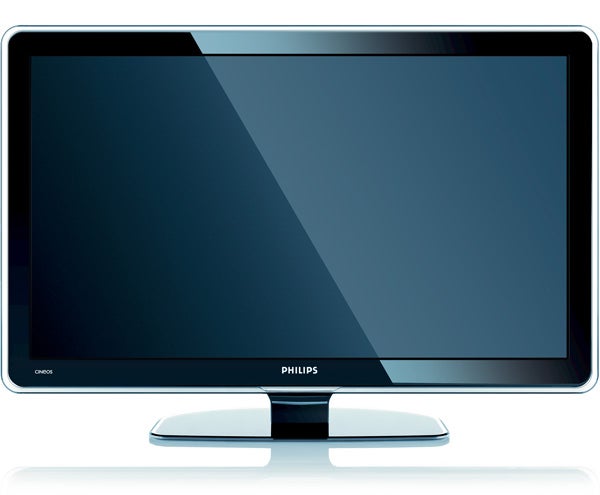
Verdict
Key Specifications
- Review Price: £1589.00
If you’re a fan of really high-end TVs – TVs with crazy feature counts, huge screens and exotic designs – the credit crunch is proving a bit of a nightmare. For so far as we can tell the crunch accounts for the apparent no-show in the UK of Philips’ 52in 9603 and 9703 TVs, and the seemingly very limited stocks of the 47in 47PFL9603D we’re looking at today. Dealers just don’t seem to think us AV punters are interested in spending the best part of £1,600 on a TV right now. But surely if something’s good enough, it will always find a market, right?
Our quest to discover if the 47PFL9603D is indeed good enough to overcome the crunch begins with its suitably opulent-looking design. This is really distinctive stuff, combining a gloriously glossy black bezel with a transparent shroud curving forward from the TV’s outer edge. Plus there’s the ‘small’ matter of Philips’ Ambilight Spectra 2 system, which sees bold pools of LED light being emitted from the TV’s rear sides to make the viewing experience more relaxing and immersive.
You can, if you wish, set this light to be ‘static’ and constant, and in any colour of your choosing. But we strongly advise you to set it to Active, which means the colour and character of the light changes in response to the content of the picture you’re watching. Since this is a ‘stereo’ incarnation of Ambilight, moreover, you can have different colours coming from each side of the screen if that’s what the picture you’re watching requires.
To be fair, the stereo Ambilight system feels a little distracting and aggressive at first. And there’s definitely a problem with it if you regularly watch TV from quite an angle down the side, as you a) don’t get the full immersion effect and b) can see the actual ultra-bright LED light source stuck down the TV’s edges. But provided you can sit more or less right in front of the TV, based on my own experience I’d be pretty surprised if after a few days you don’t find yourself wondering where Ambilight has been all your life!
The high-end feel established by the 47PFL9603D’s design is merely reinforced by its connections. Four v1.3 HDMI jacks get things off to a cracking start, but these are joined by a couple of groovy multimedia aids: a USB 2.0 port, and a DLNA-certified Ethernet port so you can stream in files from your PC. The amount of file formats supported is unusually generous too, including MP3s, .alb slideshows, MPEG videos and JPEG stills. There’s a standard PC input as well, along with everything else you’d expect of any decent flat TV these days.
The attractively weighty remote control supplied with the 47PFL9603D actually sports an Apple iPod-style navigation wheel, designed to help you navigate onscreen menus faster. And believe us, even though it can be a bit fiddly at times, you’ll need to use this wheel quite regularly. For if there’s a TV on the market today with a longer list of options and features than the 47PFL9603D, I can’t think of it. Unless it’s Philips’ own PFL9703s!
It would take me all week to cover in detail everything that’s on offer here, so I’ll try and just focus on the most innovative and important stuff – especially as this is not the first TV from the 9603D range we’ve looked at.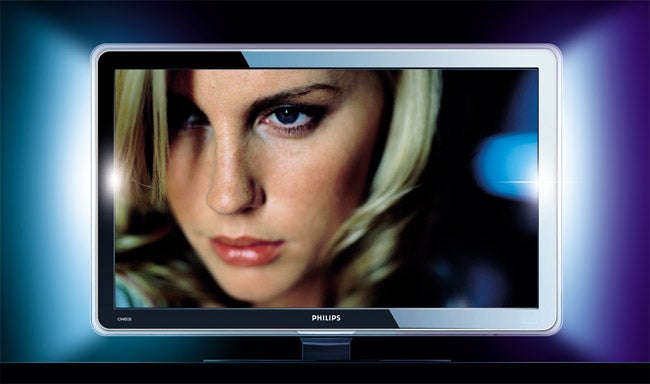
The single most important discovery is Philips’ Perfect Pixel HD picture processing engine. This umbrella name covers various processing routines aimed at improving colours, detailing, contrast, and noise reduction, highlights of which are a 17-bit colour booster; a system that digitally expands the difference between the dark and light parts of the image; and HD Natural Motion for generating new image frames between the ‘real’ ones in a source to make motion look sharper and more fluid.
The feature set also includes frame rate-doubling 100Hz processing, again to enhance motion, and there’s all manner of subtlety on offer regarding how gently or heavy handedly all the elements of the TV’s video processing work. In fact, you can turn off all of the processing elements completely, if you wish – though obviously this would seem a bit daft considering that the high-level processing accounts for a good part of the 47PFL9603D’s cost!
As you might be starting to suspect from all this, the 47PFL9603D is certainly not the easiest TV to use. When you first fire it up it takes you through a reasonably helpful setup assistant, and there’s an Active Control option that can take on a number of the image’s adjustments automatically. But beyond that you’re more or less on your own, meaning that if, say, you spot a lot of processing artefacts while watching sport it’s up to you to remember to deactivate the most likely cause, the HD Natural Motion system.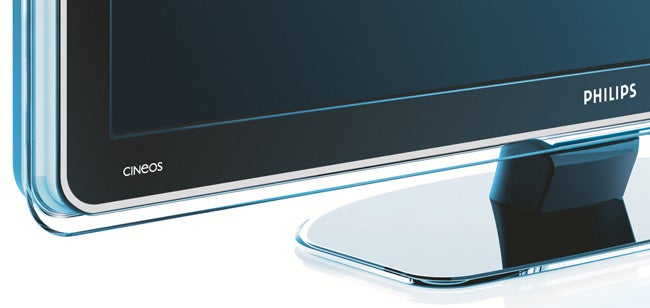
And believe us when we say that you definitely will find moments – quite regularly, in fact – where something about the picture doesn’t look quite right with a particular source until you’ve gone in and tweaked the motion controls, the dynamic contrast feature, the noise reduction tools or whatever.
However, for me the crucial thing here is that while the 47PFL9603D’s toolkit might be complicated, it does include pretty much everything you need to make your pictures look very good no matter what sort of source footage you throw at the TV. You just need to put the effort in to make sure you’re using that toolkit properly. Commit to this level of effort, and you’ll be saved from the sort of forced compromises you get with less advanced processing engines.
All of this is so far a rather abstract way of bigging up the 47PFL9603D’s picture quality. So let’s get more specific, starting with the set’s extraordinarily good standard definition playback. The 47PFL9603D is a full HD TV, yet the detail-adding, noise-reducing talents of the Perfect Pixel HD engine work near miracles on translating lowly standard def sources onto the screen’s 1,920 x 1,080 pixels.
Not that the 47PFL9603D is only standard definition’s friend, mind you. It also loves HD more than most TVs, presenting top HD sources like There Will Be Blood on Blu-ray with staggering amounts of detail and clarity. What’s more, unlike older versions of Philips’ image processing, the extra detail on show doesn’t leave pictures looking grainy or edges looking over-stressed.
There’s less trouble with shimmering halo noise around moving objects than we’ve seen with previous Philips TV generations too, leaving you freer to appreciate the striking fluidity of the set’s motion handling with HD Natural Motion engaged.
As usual with Philips LCD TVs, meanwhile, colours are exceedingly rich and bright. Colour-rich broadcast fodder like Sky News positively blasts off the screen at you, as do animated Blu-rays like Ratatouille, and colourful games like Viva Pinata 2 on the Xbox 360. Yet thanks to the new colour control element of the Perfect Pixel HD system, despite being emphatically rich, colours are also engagingly and consistently natural.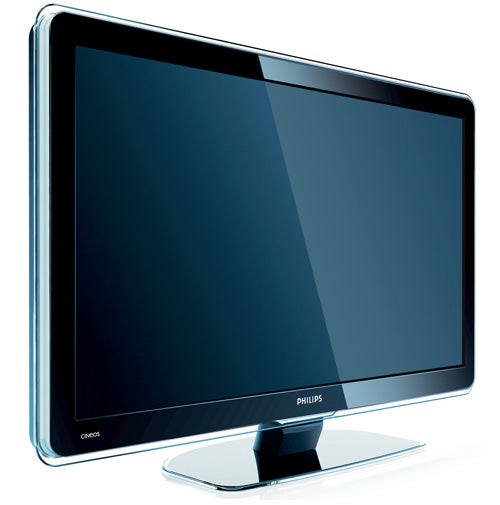
The 47PFL9603D’s black levels are decent, too. They achieve a solid depth, retain fair amounts of shadow detail, and look consistent, by which I mean there’s no undue flicker caused by the dynamic backlight and no significant light pooling of the sort that so blighted Sony’s 46W4500 in our previous TV review.
For the most part, then, the 47PFL9603D lives up to its relatively high-spec billing, like the other 9-series TVs we’ve seen from Philips to date. However, things are moving very fast in the TV world right now, and for me this fact ultimately costs the 47PFL9603D a little of my usual love.
For instance, having seen Pioneer’s latest plasma TVs and Samsung’s new LED LCD TV, my expectations of black level have recently shifted. So now I feel less forgiving of the 47PFL9603D’s gentle grey clouding over dark areas of the pictures whenever the screen has to try and show simultaneously a combination of bright and dark elements. It doesn’t help the black level situation, either, that the TV seems to suffer a really quite restricted viewing angle, with the tell-tale greyness creeping in if you watch from as little as 35 degrees or so off axis.
I also have to come back once again to the complexity of the TV’s settings. For it really is quite easy to make the 47PFL9603D’s pictures look seriously affected by processing artefacts, or to sell HD sources short, if you don’t have all the image settings correctly organised.
Things are rather simpler when it comes to the 47PFL9603D’s audio, thankfully. There are fewer settings for you to get your head round, making it easier for you to enjoy with real consistency the impressively powerful, wide-ranging and clear soundstage pushed out by the set’s ‘invisible’ speakers.
”’Verdict”’
The 47PFL9603D is a supremely clever, gorgeously designed, feature-laden and high performance TV, just like all the other sets in Philips’ current 9 Series range. And so it’s still a fine specimen of a premium TV. Yet with its relatively high price in mind, my newfound sensitivity to its slight black level and especially viewing angle issues ultimately proves enough to stop me from being able to give the TV the whole-hearted recommendation I’d hoped – if not expected – it would earn.
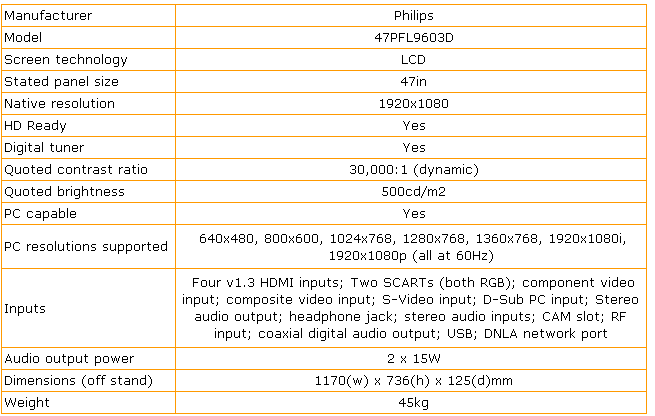
How we test televisions
We test every TV we review thoroughly over an extended period of time. We use industry standard tests to compare features properly. We’ll always tell you what we find. We never, ever, accept money to review a product.
Trusted Score
Score in detail
-
Features 10
-
Value 8
-
Image Quality 8
-
Design 10
-
Sound Quality 8

